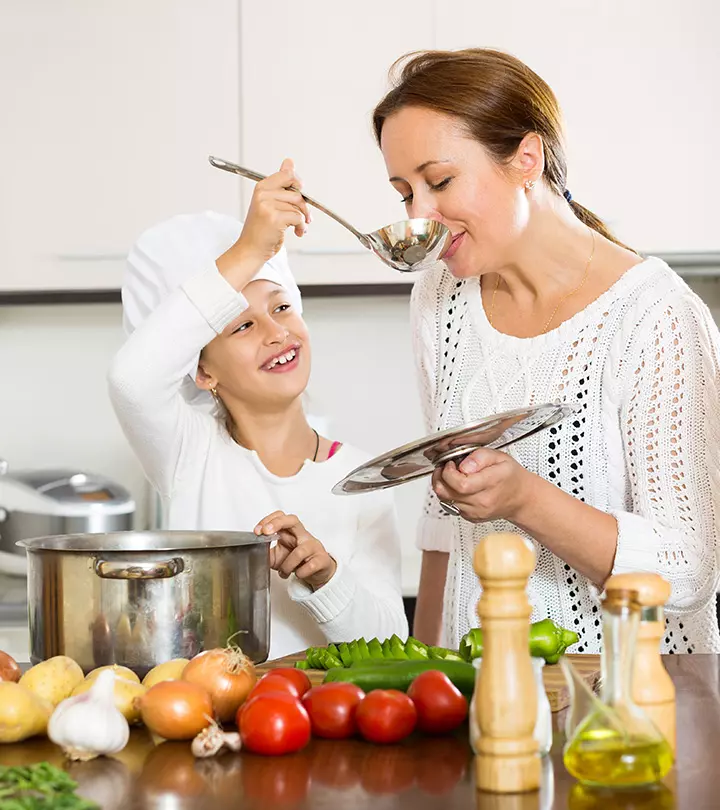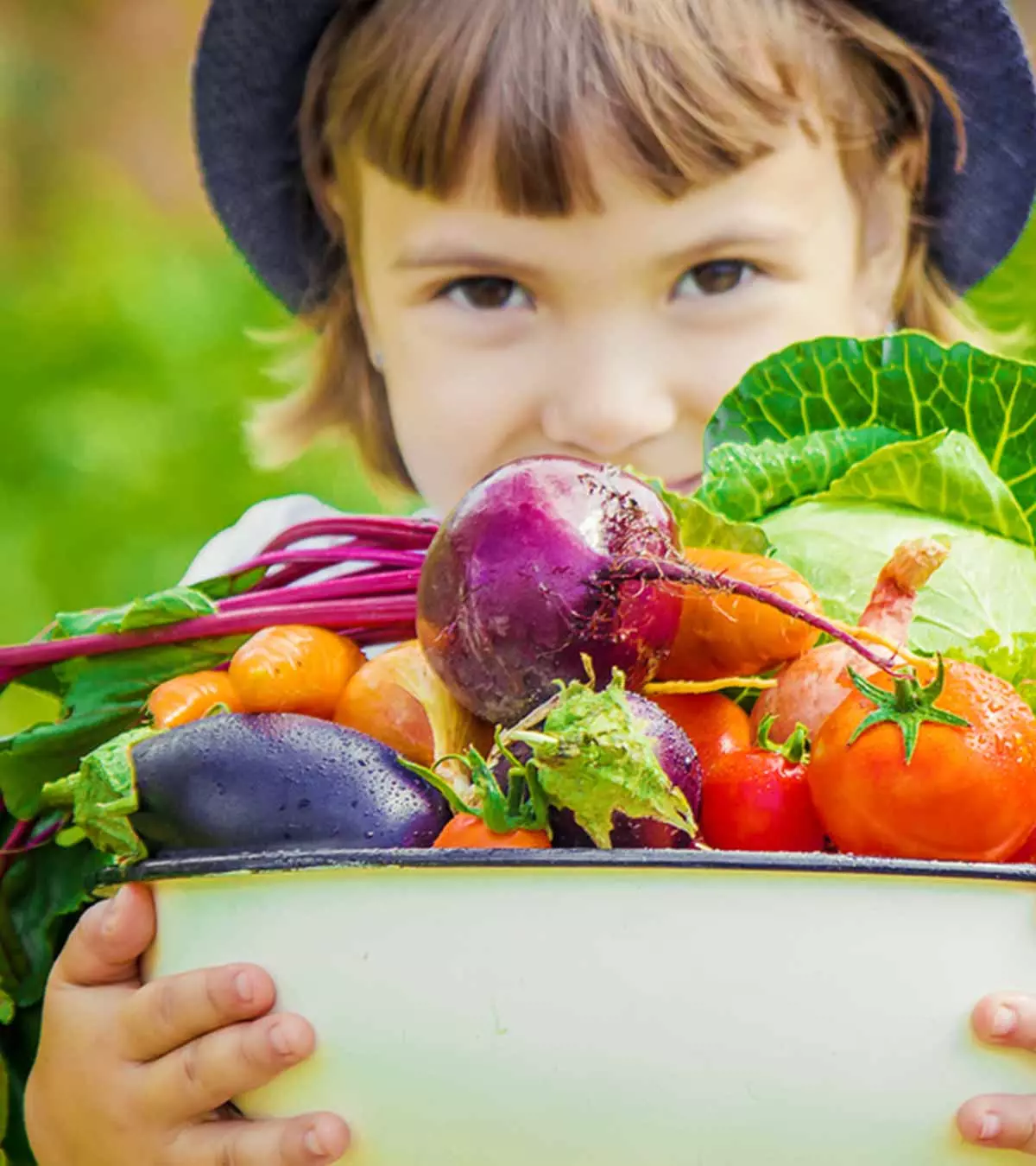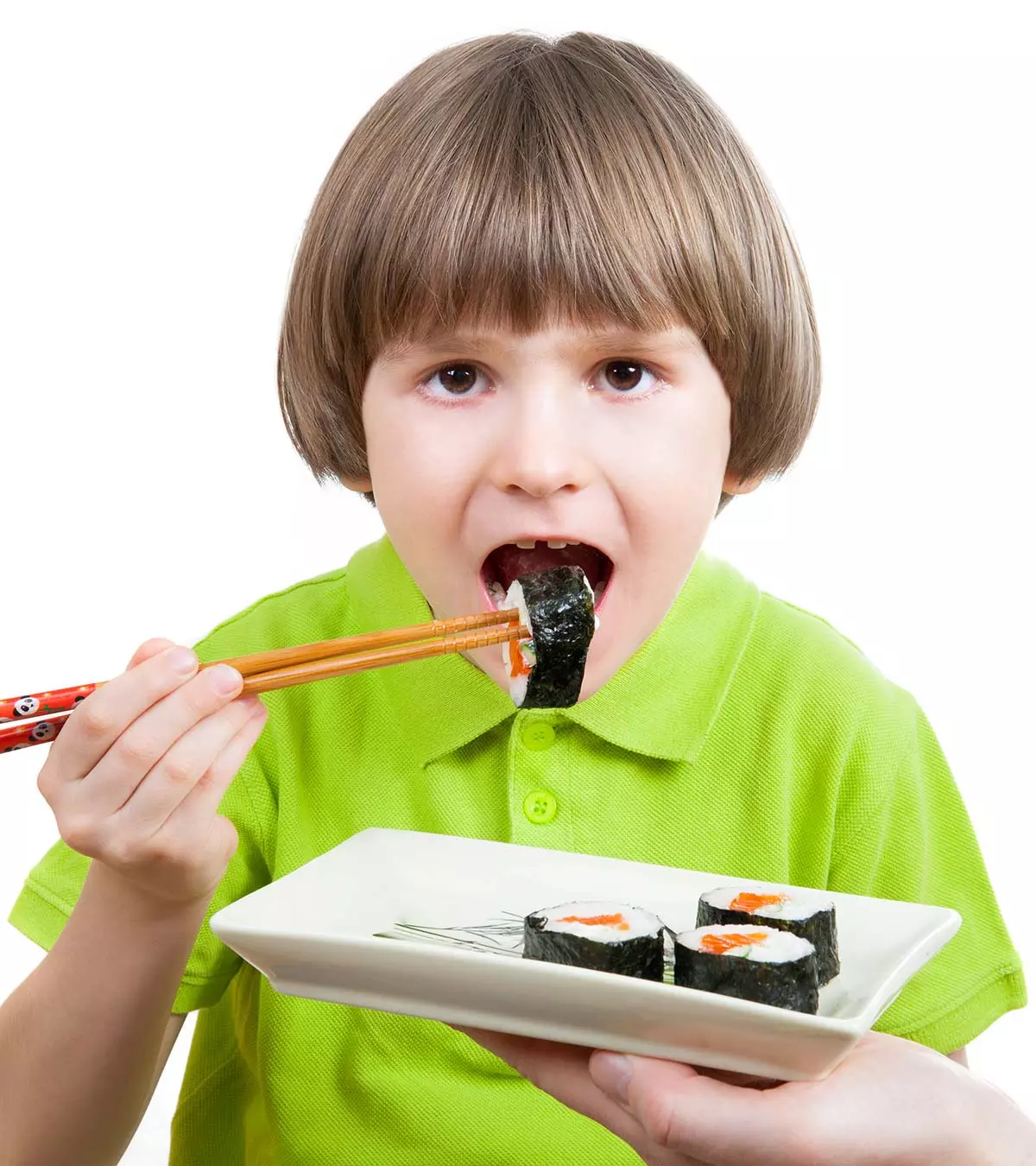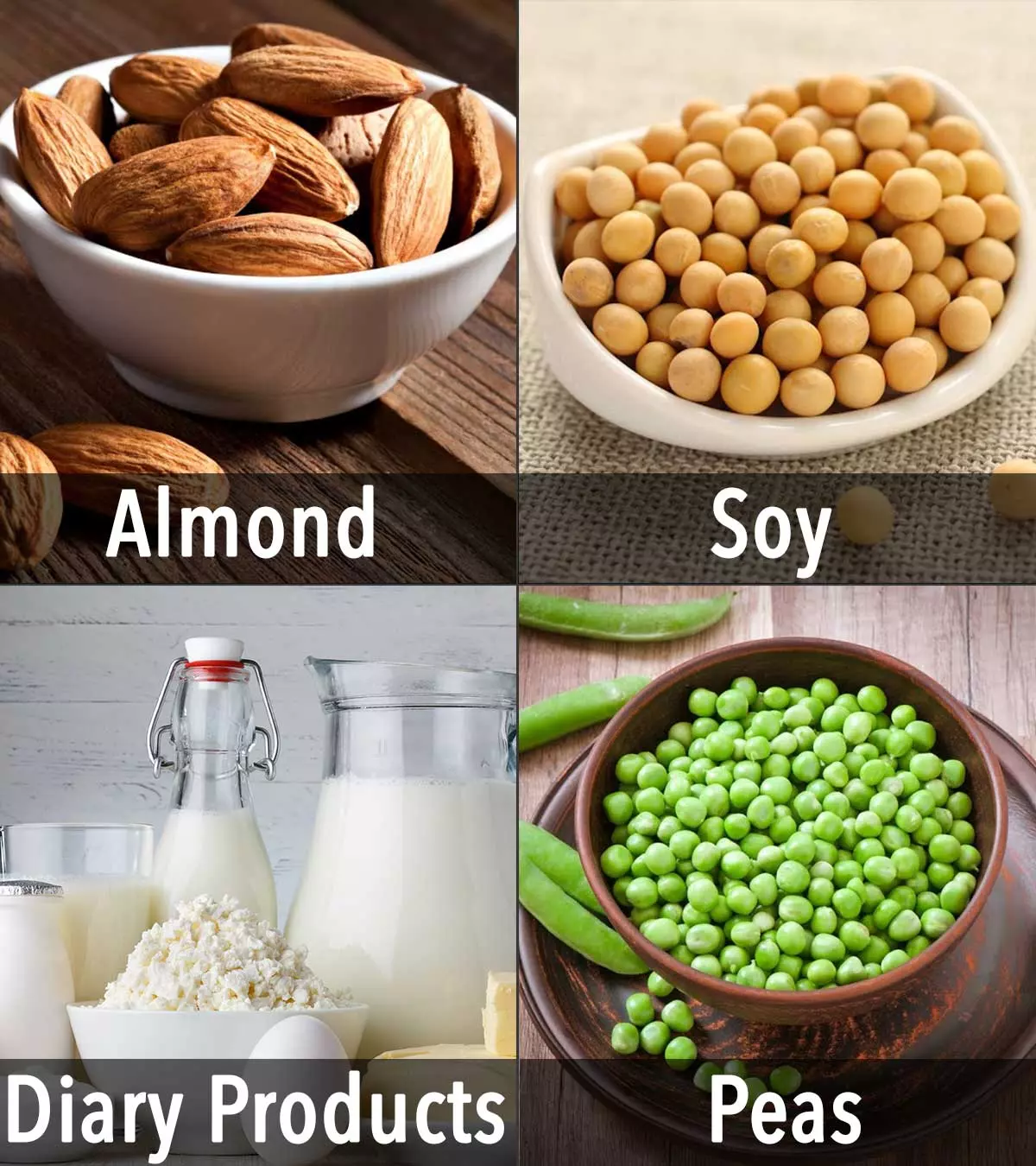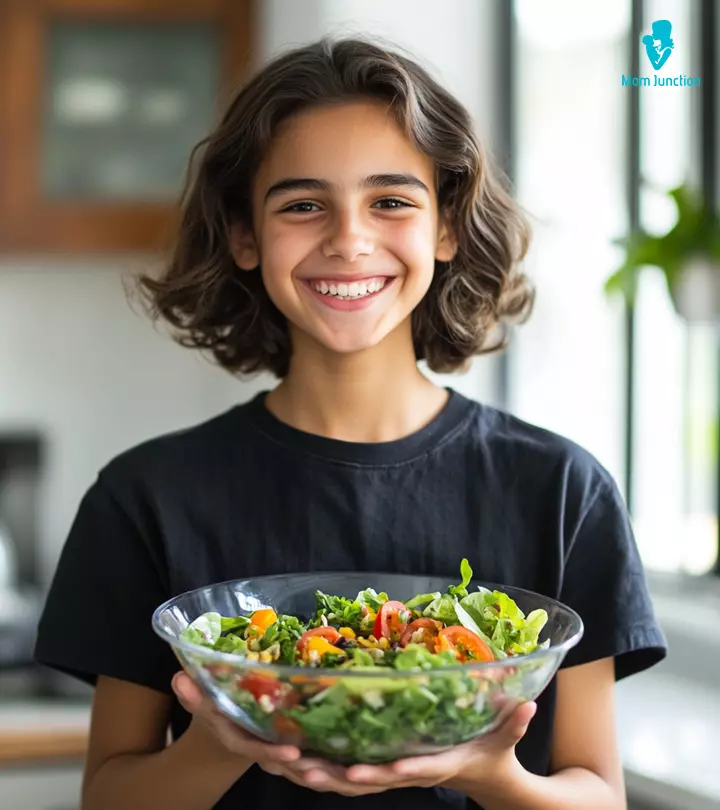
Image: Midjourney/ MomJunction Design Team
Teenage is a period of numerous hormonal changes, and it can be seen clearly in the case of girls. They want to maintain their figure, owing to which this post on a diet for teenage girls can come in handy. During their teenage years, girls are conscious about how they look and present themselves. But as a parent, you are sure to worry about whether or not they are getting an adequate amount of nutrients or not. Dieting does not refer to fasting or just living on a liquid diet. It mainly aims to have a healthy balanced diet and cut off those extra calories. So what is the right kind of adolescent diet? Read on as we tell you about the importance of a balanced diet for a teenage girl and tips on maintaining it.
Key Pointers
- A balanced diet is crucial for teenage girls.
- The diet should include specific proteins, healthy fats, and carbohydrates required for their developmental course.
- Consumption of high-calorie junk foods should be limited.
- Physical activity is essential to maintain a healthy lifestyle and body weight.
Can A Diet Become Unhealthy?
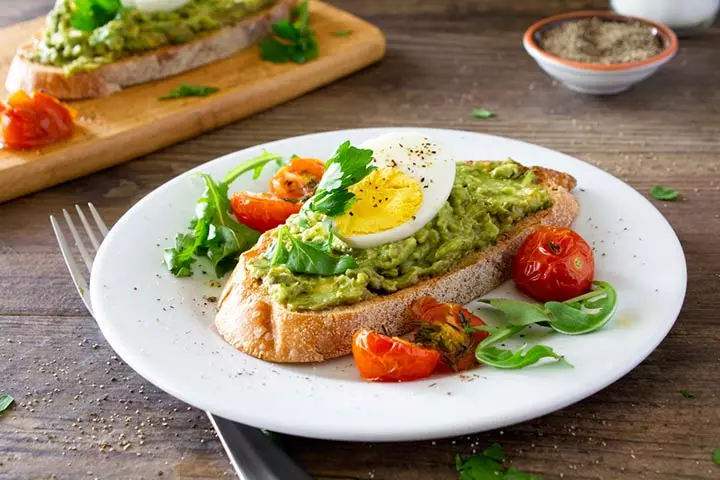
Following a diet plan is good as it will teach discipline and create awareness of what you are consuming in a day. But sometimes, that diet plan could become unhealthy.
According to the 2015-2020 dietary guidelines for Americans, a healthy diet for teenage girls should be as follows:
- A diet that allows you to follow healthy eating patterns and consists of fruits, vegetables, protein, dairy, grains, and oils.
- It should limit the consumption of saturated fats, added sugars, and sodium intake.
- It should focus on variety and nutrient-rich food across all food groups (1).
Any diet that contradicts these points could be considered unhealthy. If a diet plan is restricting certain food groups such as carbohydrates or fats, it could be unhealthy as the body needs all of this but in moderation. So, it is not advised to follow unhealthy diet plans for weight management or to increase muscle growth in short periods of time.
If your girl is overweight or obese, then it is good to consult a dietitian for a customized diet plan rather than following any random online diet.
 Quick fact
Quick factBefore we jump into the diet plan, we will give you a few tips that could clarify the importance of a healthy diet plan for teenage girls.
Importance Of A Balanced Diet For Teenage Girls
Most teen girls are conscious about their weight and appearance and tend to reduce their calorie intake to maintain their weight. What you need to tell your girl is that she can maintain an ideal weight by consuming wholesome food.
A healthy diet plan for a teenage girl should include:
- Calories that the teenager needs for overall growth. The average calorie requirement for teen girls is 1,800 to 2,200 or more if the girl is physically active and plays a sport (2).
- Carbohydrates, fats, and proteins are needed for healthy physical development and energy.
- Vitamins and minerals for healthy growth and vitality.
A healthy and balanced diet helps the child develop healthy eating habits, which will aid her in the future. Additionally, eating a healthy and nutritious diet also aids in boosting mental health, sharpening cognitive skills like concentration and memory, and improving academic performance (12). Therefore, you need to prepare a healthy diet for your teenage daughter.
 Quick tip
Quick tipDaily Nutritional Requirement Of Teenage Girls
For proper growth and development, a teenager’s nutrition plan should include a steady and balanced diet that comprises all essential food sources. According to the American Academy of Pediatrics (AAP), “Unless blood tests and a pediatrician’s evaluation reveal a specific deficiency, it’s preferable to obtain nutrients from food instead of from dietary supplements (3).”
Here are the key foods that the diet for teenage girls must include (3) (4):
- Vegetables: Teens between 14 and 18 should consume about 2 1/2 to 4 cups of vegetables daily. Common vegetables that can be included in the diet to meet the requirement include green leafy vegetables such as spinach or kale, beans, potatoes, and cauliflower.
- Fruits: About 1 1/2 to 2 1/2 cups of fruit should be consumed by teenagers daily. It can be in fresh fruits, such as apples and berries, or roasted and dry fruits, such as raisins and prunes.
- Dairy: Teens are typically advised to consume about three cups of dairy products daily. Familiar dairy sources such as milk, cheese, and yogurt are recommended.
Besides these foods, teenagers should also consume ample amounts of grains and protein foods such as lean meat, seafood, eggs, and nuts every day to stay well-nourished.
Tips On A Healthy Diet Plan For Teenage Girls
Growing girls need more than just some food and water for sustenance. They need a complete diet that gives them the nutrition they need to grow into healthy and strong young women. Here are a few things you should keep in mind when formulating a diet plan for your girl.
1. Plan your child’s meals

Follow a food guide or make a diet chart for effective meal planning. The idea is to make your child’s diet complete with the nutrients that she needs to grow and stay healthy. A complete diet is one that has proteins, carbohydrates, and fats. Avoid no-carb or zero-carb diets as they can have adverse effects on the child’s health.
Also, make sure that your teen has all the meals as planned. Breakfast, especially, must not be missed, for it is the most important meal of the day that boosts metabolism and will kick-start her bodily functions too! Healthy breakfast ideas for teens include fresh fruits and protein sources as they will keep her full for longer and give her the energy to face the morning rush. Also, replace caffeine with fresh juices, smoothies, milkshakes, or an occasional cup of tea.
Encourage your teenager to help with meal prepping on weekends or days off. This can save time during the busy school week and make healthy options easily available, helping them stick to a nutritious diet.
2. Tell her healthy fats are good fats
Since teenage girls might be conscious of their weight, they will shy away from fats. However, not all fats are bad. Fattening foods are not good for your teen girl’s health, but she must know about the concept of healthy fats that are essential for the absorption of some nutrients and the production of important hormones (5). Healthy fat intake helps in keeping our body well-hydrated and is necessary to obtain a certain portion of calories that the body needs. Encourage the consumption of healthy fats and ask your teen to steer clear of trans-fatsiCreated by adding hydrogen to vegetable oils to make them solid , which lead to excess weight gain.
3. Make a smart choice for ‘in-between’ snacks
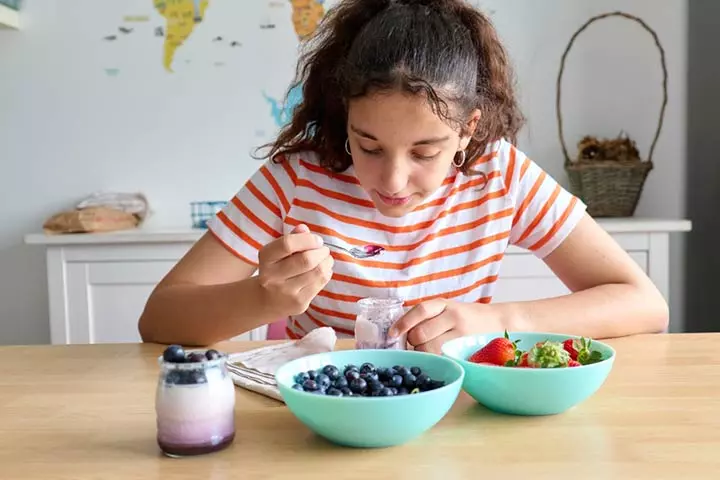
If your daughter feels hungry between meals, make her reach out for a fruit, a handful of dry nuts or seeds, roasted lotus seeds, boiled egg, etc. They are easy to eat and packed with nutrients, thus making them a healthy snacking option.
4. Set a time for snacks
The best time for snacks is in between breakfast and lunch. Another good time is after lunch and before dinner. While some may be okay with the idea of a late-night snack, it is good to avoid them, especially if the child wants to lose excess weight or can make a smart choice.
The child may include a glass of warm milk or 1-2 pieces of soaked dry fruits like figs and dates. You can also give her sugar-free or low-sugar energy bars. Ask her to limit candy bars and snacks that simply pack in calories and offer no goodness.
5. Give a twist to lunch
Make lunch ideas for teenagers interesting by using the same ingredients differently.
For example, you can use the ingredients of a salad, such as veggies and boiled lentils, with a tortilla roll to make veggie or meaty wraps with a dash of cheese or tangy sauces. The bottom line is that your daughter should eat a filling lunch instead of nibbling on some salad leaves and protein bars.
6. Keep the dinner light
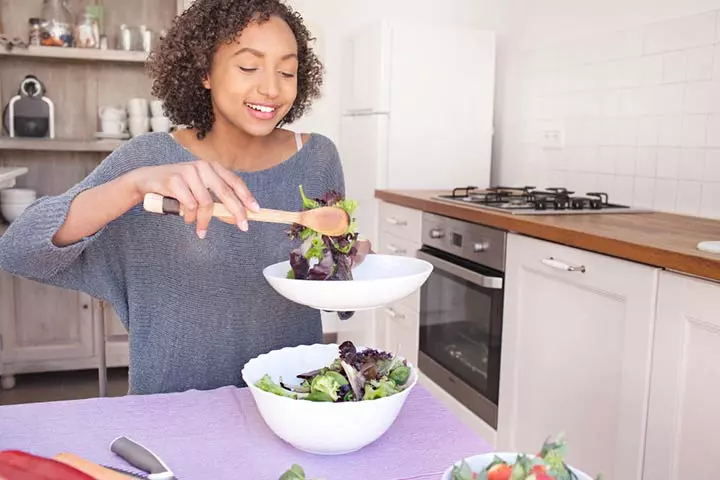
Dinner should have fewer carbohydrates but must not be skipped. Prepare a healthy meal but keep it light. Simple dinner ideas for teens would include vegetable or chicken soups, salads with her choice of dressings, multi-grain pasta, or multi-grain noodles. The idea is to combine nutrition with taste so that your child will eat it.
7. Prepare low-fat low-sugar desserts
Too much sugar intake is bad. But if your child has a sweet tooth, you could switch to low-sugar and low-fat dessert alternatives, such as low-fat flavored yogurt, fruit salads, or low-sugar sweet treats. You could also make your girl’s favorite desserts healthier by adding fruits, nuts, or crackers to it.
Eliminating sugar altogether and at once, can create a craving for sweets and lead to indulgence in sugary foods (13).
 Quick tip
Quick tip8. Make her drink plenty of water
Let your girl drink enough water to maintain adequate hydration. Inadequate water intake may also make the child hungry more often. So, drinking enough water will keep those hunger pangs at bay and the metabolism rate up.
According to the US Center For Disease Control and Prevention (US CDC), “Getting enough water every day is important for your health. Healthy people meet their fluid needs by drinking when thirsty and drinking with meals. Substituting water for one 20-ounce sugar-sweetened soda will save you about 240 calories (6).”
9. Avoid junk foods
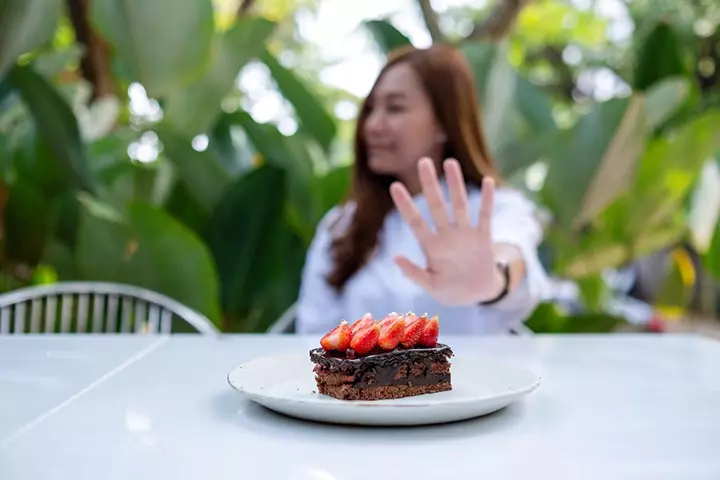
Any food that offers no nutritional value qualifies as junk food and should be avoided. Such food can lead to excess weight gain as our body doesn’t use up the junk food for anything good. It just accumulates as empty calories. Talk to your girl about healthy and unhealthy foods and explain why she should avoid junk food. Examples of unhealthy foods include fast food, sugary drinks, and snacks high in trans fats and added sugars.
Teenage girls could become vulnerable to fad diets or come under peer pressure. But as a parent, you can help your daughter eat right and follow a healthy lifestyle. To help you with that, we have created two sample meal plans that you can use as a reference to chalk up the ideal diet for your teen girl.
Diet Plan For Teen Girls
There is no one-size-fits-all diet for teenage girls. Your girl’s diet must be prepared considering her age, weight, exercise habits and fitness, and health conditions. It is important to include workout plan for teenagers in their routine.
Yelena Wheeler, a registered dietitian nutritionist from Los Angeles, California, says, “It is always recommended to have small, frequent meals throughout the day to maintain healthy blood sugar, metabolism, and energy levels. Starting off the day with a breakfast full of protein and fiber is best to maintain optimal health.”
Ideally, a diet for teenage girls must include:
- Natural protein foods — red meat, pulses, cereals, green vegetables, and fish
- Calcium-rich foods — soya beans, tofu, nuts, milk products
- Iron-rich foods — beans, poultry, seafood, dark green leafy vegetables, peas, iron-fortified foods
- Vitamin D rich foods — breakfast cereals, oily fishes, and margarine
- Vitamin C rich foods — lemon, grapefruit, potatoes, tomatoes, and oranges
- Folate-rich foods — green vegetables, brown rice, fortified bread and breakfast cereals
Putting them all together, we have compiled a couple of diet plans that could work for your teenager.
1. Healthy diet plan for students
Teenagers have a busy schedule, and healthy meals might not often be a part of their to-do list. This diet plan includes simple, healthy foods that you can get them to eat despite their packed routines. This simple plan caters to the needs of vegans and vegetarians as well.

The above plan can give a teenage girl the required amount of calories, between 1800 and 2200 (2). This is only a sample meal plan, and you may replace the dishes with other foods to make a complete meal plan for teens.
This stage of rapid growth and development can go awry if your eating habits go wrong. Eat heartily but sensibly like some of the sample meal plans given above.
2. The athlete diet plan
Athletes or sportspersons would need more calories than an average teenager with a not-so-active lifestyle. This meal plan sample aims at delivering the necessary calories that they need when training for sports.
| Meal | Omnivore | Vegetarian | Vegan |
|---|---|---|---|
| Breakfast | Fruit smoothie with Whole wheat Egg McMuffin; or 3 egg whites with 1 cup oatmeal and 1/2 a banana | Waffles topped with blueberries, strawberries and topped with Maple syrup; or Granola and fruit with a glass of orange juice | Breakfast quinoa bowl; or Sweet potatoes and yams, boiled and topped with maple syrup |
| Midday Snack | Banana or 16 oz. Vitamin shake | Bunch of grapes or crackers with cheese | Banana or 1 cup chia slurry |
| Lunch | Grilled chicken breast with 1/2 cup spinach, 1 medium baked potato, and 16 oz. Water; or Deli meat sandwich with peppers and hummus and 1 apple | 1 whole-wheat English muffin with 1/2 cup cottage cheese, 1/4 cup walnuts, 1 tsp honey, and 1 cup peas; or Whole wheat grilled cheese sandwich with sliced tomatoes and 1 cup cucumber and tomato salad, and 1 apple | Black bean wraps with lettuce, tomato, and olives; or 1 serving Spiced tempeh with vegetables and quinoa |
| Evening Snack | Cottage cheese and peaches | 1/2 cup raisins and 1 banana | Almonds and grapes |
| Dinner | Broccoli cheddar soup and saltines; or Meatloaf with veggies | Quesadilla, peppers, and hummus; or Large mixed vegetable salad with dressing | Mashed potato white pizza (vegan cheese); or Tofu scramble with spinach and vegan mozzarella |
Choose meal portions such that your active teenage girl gets between 2,200 and 2,400 calories every day, to continue training and maintain a healthy weight.
Note that these are only sample plans to give you an idea of the diet your teenage girl must be following. You can change the variety of foods and their quantities based on nutritionist recommendations, and after considering any food allergies or sensitivities that the child may have.
Remember,
Good eating habits=healthy children=healthy adults
Frequently Asked Questions
1. What are the benefits of eating a healthy diet for my teenage girl?
A balanced diet consists of all the essential nutrients, such as calcium, iron, vitamin D, and protein, in a balanced amount. These nutrients help a teenager meet their daily growth and development needs. For instance, calcium is vital for maintaining strong bones and teeth, whereas potassium helps regulate blood pressure. In addition, fiber aids in digestion and regular bowel movements, and protein and iron support a robust immune system (4).
2. How long should my teenage girl take a well-balanced diet?
There is no age limit for consuming a balanced diet. Ideally, eating a healthy, well-balanced diet containing foods from various food groups is vital throughout life. However, adolescence is a phase that requires special attention. Ensuring adequate nourishment during this phase helps teens meet their daily growth and development needs and maintain optimum hormonal balance.
3. How much protein should a teenage girl consume daily?
A teenage girl should aim for 46-52 grams of protein per day based on her weight, age, and activity level (7).
4. Is it necessary for teenage girls to take supplements? If so, which ones?
Supplements are not required for healthy teenagers who consume a balanced diet. However, consult your doctor before taking any vitamin or mineral supplements (8).
5. How can teenage girls balance their diet with their busy schedules?
Teenage girls may manage their diet with busy schedules by planning ahead of time and preparing nutritious meals and snacks, prioritizing whole foods, picking quick and healthy meal options, and making wise choices while eating (9).
Teenage is a phase of rapid physical and physiological changes that require attention to both physical and mental health. Self-care practices, such as eating a well-balanced diet, are essential for teenagers to maintain a healthy body image and mental well-being. However, eating disorders can occur in teenagers, especially when they follow fad diets that encourage restrictive eating for rapid weight loss. Therefore, parental guidance is crucial to ensure that teenagers receive sufficient calories with essential nutrients such as protein, calcium, iron, zinc, and vitamin D. Thus, they should eat a well-balanced diet with various healthy foods from different food groups. To ensure your teen is eating well, encourage them to eat three main meals and two snacks. Train them to make healthy choices when eating out. Furthermore, maintain variety in the meals you serve at home to avoid boredom. Since teenagers are more likely to follow healthy eating habits when they see you doing the same, try to lead by example.
Infographic: Healthy Diet Tips For Teenage Girls
Teenagers grow swiftly, so they need a healthy diet. However, if your girl is conscious about her body and appearance, she might make unhealthy changes to her diet. Read the following infographic to plan a well-balanced diet for her that can help her develop. Illustration: Momjunction Design Team
Illustration: Diet For Teenage Girls: 9 Easy Tips And 2 Simple Diet Plans
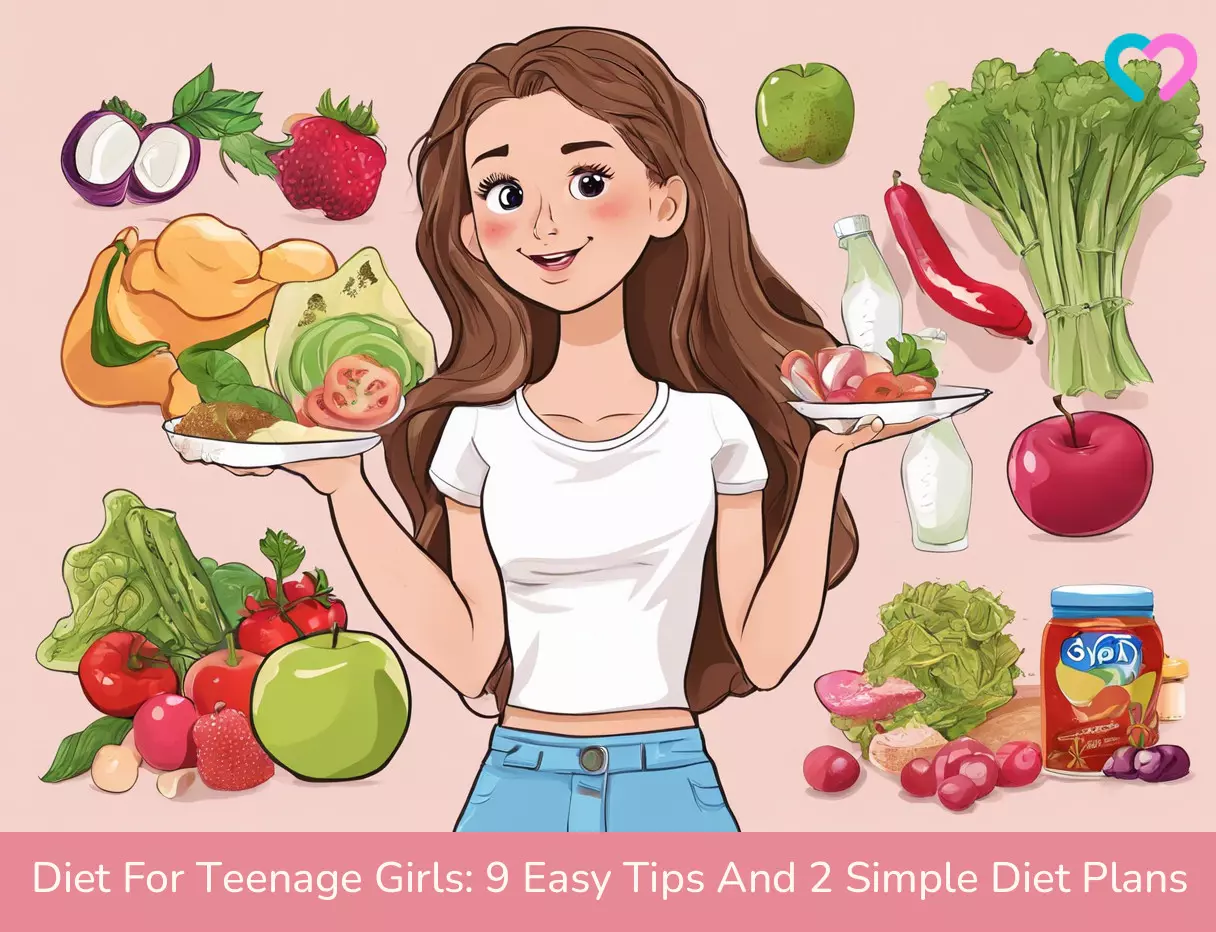
Image: Stable Diffusion/MomJunction Design Team
Are you a teen making unhealthy food choices? Learn the top 5 food mistakes most teens make and how to fix them in this informative video!
References
1. Dietary Guidelines For Americans 2015-2020- Eight Edition; US Department of Health and Human Services.
2. Parent Tips- Calories Needed Each Day; National Heart, Lung, and Blood Institute
3. A Teenager’s Nutritional Needs; American Academy of Pediatrics
4. Take Charge Of Your Health: A Guide For Teenagers; National Institute of Diabetes and and Digestive and Kidney Diseases
5. Dietary Fats; American Heart Association
6. Make water your beverage of choice;Michigan State University Extension
7. Teens and Protein: How Much Do You Need?; North Dakota State University
8. Vitamins and Minerals; Nemours TeensHealth
9. Healthy Eating; Nemours TeensHealth
10. Healthy eating habits for teenagers; raisingchildren.net.au
11. Food and nutrition for adolescents; The Royal Women’s Hospital
12. Food, mood & learning outcomes; National Nutrition Foundation
13. How to break the sugar habit-and help your health in the process; Harvard Health Publishing
Community Experiences
Join the conversation and become a part of our nurturing community! Share your stories, experiences, and insights to connect with fellow parents.
Read full bio of Tracy Tredoux
- Yelena Wheeler is a Registered Dietitian Nutritionist and nutrition writer from Los Angeles, CA. A clinical dietitian for over a decade, she worked within prominent hospital systems in Los Angeles and Central California. Yelena did her masters in Public Health (Health Education) at California State University Northridge.
 Yelena Wheeler is a Registered Dietitian Nutritionist and nutrition writer from Los Angeles, CA. A clinical dietitian for over a decade, she worked within prominent hospital systems in Los Angeles and Central California. Yelena did her masters in Public Health (Health Education) at California State University Northridge.
Yelena Wheeler is a Registered Dietitian Nutritionist and nutrition writer from Los Angeles, CA. A clinical dietitian for over a decade, she worked within prominent hospital systems in Los Angeles and Central California. Yelena did her masters in Public Health (Health Education) at California State University Northridge.
Read full bio of Swati Patwal
Read full bio of Rohit Garoo
Read full bio of Shinta Liz Sunny













